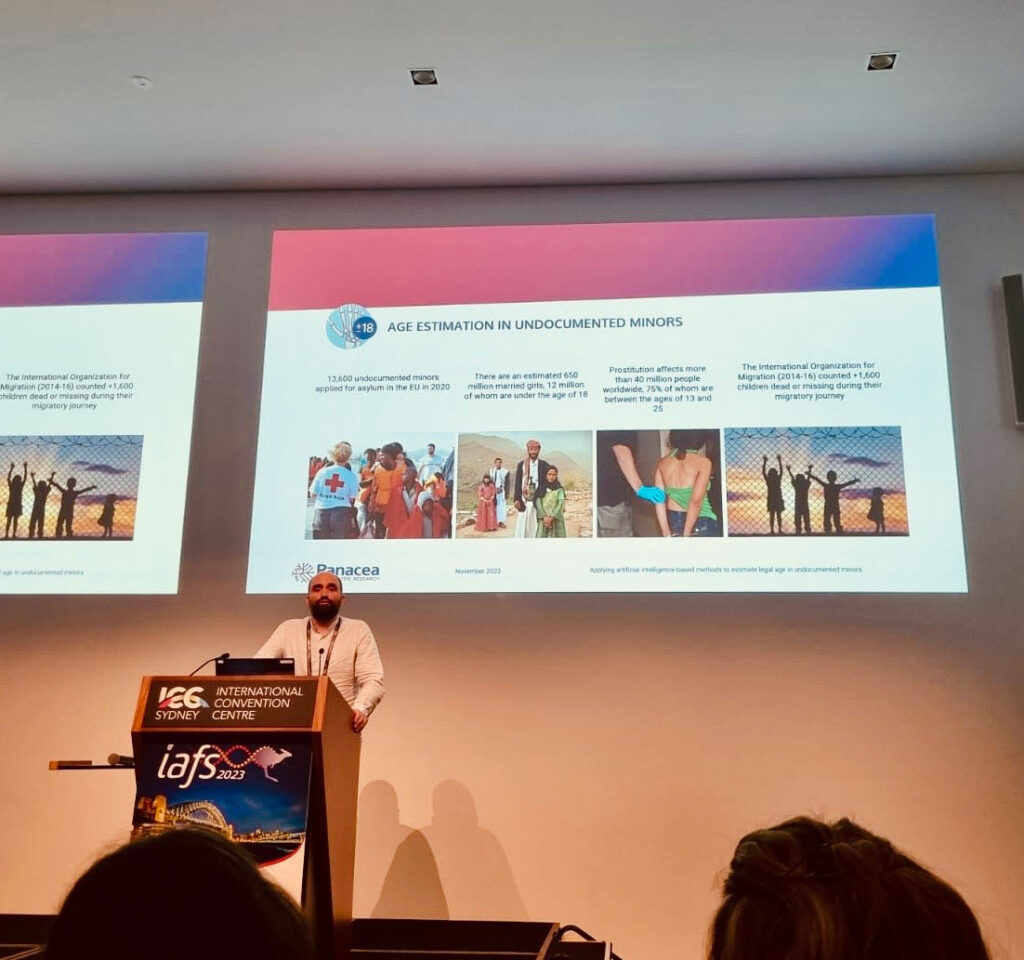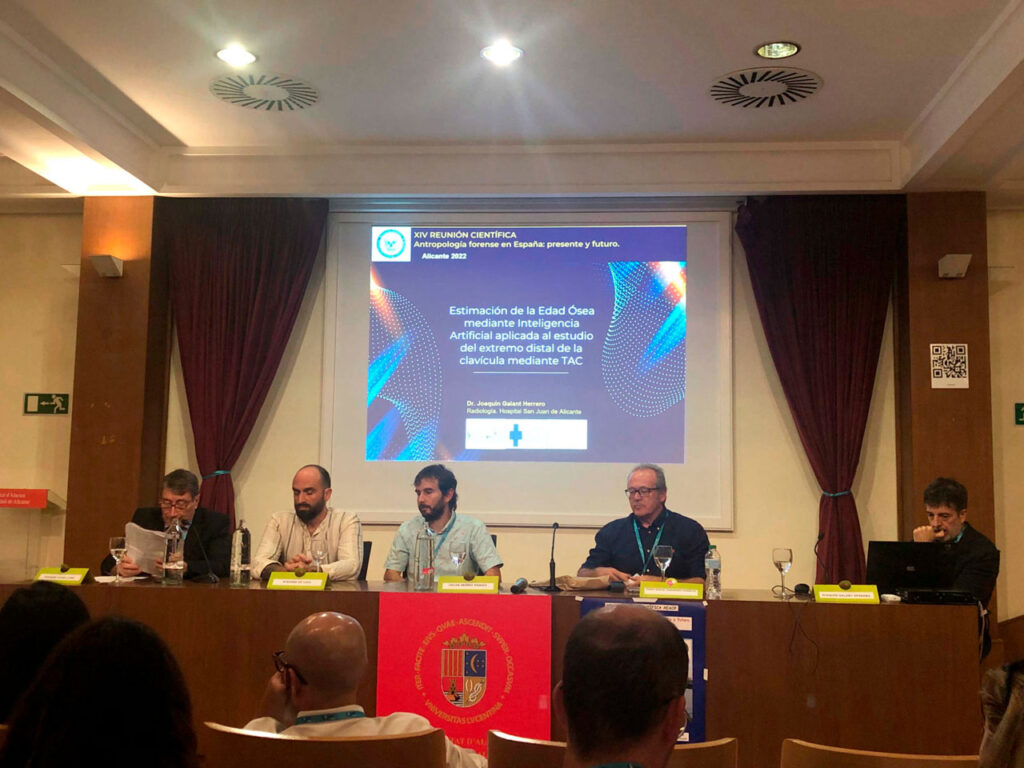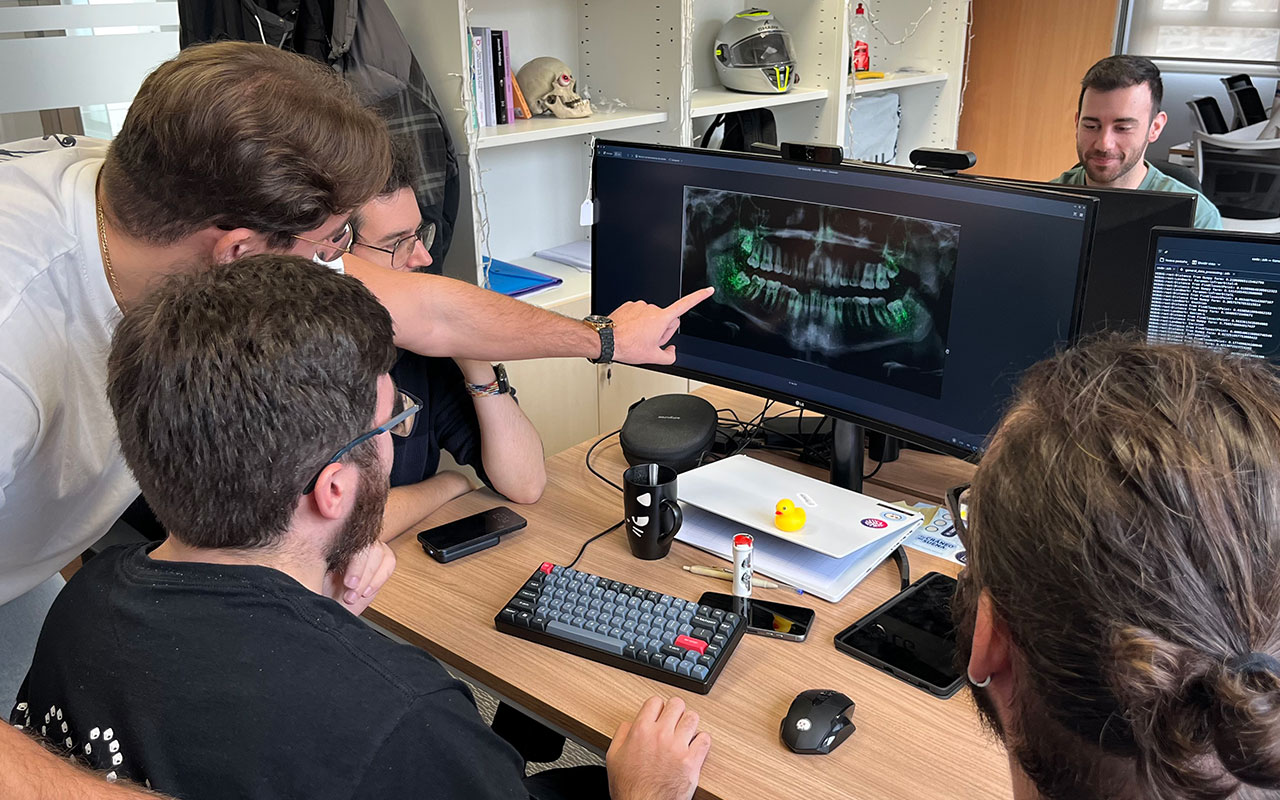automatic estimation of the legal age of unaccompanied migrant minors. Artificial intelligence to meet the challenge of identifying undocumented minors.
Presentation and justification
This research project, funded by the European Union (EU) in the framework of the “Marie Skłodowska-Curie 2020” actions, is developed in response to one of the most urgent social challenges of the last 20 years in different regions of the world: the estimation of the legal age (18 years) and the identification of migrant minors without family references.
Age is an innate characteristic of our own identity. However, in many countries, especially on the African continent, less than 10% of new births have been reported in a civil registry, in contrast to the official rate in European countries (90%). For this reason, applicants for international protection, especially children and adolescents, may arrive in the EU undocumented or with unreliable identity documents. As a more serious consequence, these minors may end up unprotected and deprived of the rights to which they are entitled.
Age assessment means providing the legal and prosecutorial authorities of the country of destination with accurate information on the age of the presumed child in order to be able to properly apply the necessary legal standards for the protection and safeguarding of the child, as well as special or additional procedural guarantees during international protection procedures. For this purpose, and exclusively in the case of well-founded doubts about the real age of the person, different tests are carried out which are classified as medical or non-medical depending on whether or not they require the participation of a medical practitioner. With regard to the former, a distinction is made between radiation-free methods (physical developmental assessment and visual inspection of the oral cavity) and methods involving radiation (an X-ray of the carpal bones of the non-dominant hand, a panoramic X-ray of the oral cavity, and sometimes a chest X-ray or CT scan). That said, although age-estimation tests are a key tool in the migrant intake process, the margin of error and their time-consuming nature make them a complex, tedious and often highly subjective process. Moreover, age assessment methods and processes differ across Member States and do not always ensure reliable and rights-respecting multidisciplinary age assessment processes for those who undergo them.
In fact, many commonly used techniques and methods for age estimation are based on the analysis of reference samples composed of subjects mostly of European, North American or developed country origin. These are countries where it is easy to obtain large amounts of medical images (e.g. OPTs or carpal radiographs of the hand) because access to medical treatments by a patient is easier and adequate resources exist for the storage and exchange of this type of information between members of institutions. On the other hand, in general, in those countries of origin of migrant children, it is not so easy to access medical care and there is no reliable record of the treatments administered to an individual, so there are increased difficulties in accessing population-based samples useful for researching new age-specific methodology for age estimation.
Therefore, the fundamental mission of this project has been to have a set of samples whose geographical origin is from multiple countries around the world, and from all 5 continents, as this is the only way to guarantee the reliability of the methodology once it is applied in daily forensic practice and legal age assessment processes.
Objectives
The objectives of this project are: 1) to develop automatic methods for estimating legal age by applying techniques based on artificial intelligence; 2) to generate a holistic model that includes different medical imaging modalities and anatomical regions (carpus, teeth and thorax); 3) to validate the models on real cases of migrant minors without family references from Spanish forensic medicine institutes; 4) to obtain more objective, accurate, robust and efficient methods; 5) to develop models that are explainable and interpretable for the forensic community, especially for the courts of justice, responsible for the decision-making process.
Regarding point 3, carrying out the validation on real cases of undocumented migrant minors, whose files are stored in the most important institutes of forensic medicine and forensic sciences in Spain, is a necessary step to demonstrate the validity of the data, the robustness of the algorithms and the reliability of the process itself. The collaboration of the indicated institutions allows us to close a cycle, and to find out whether forensic professionals will really be able to apply these models in their forensic work, according to sound statistical standards and the most important principles of child protection.
Material and experts involved
Thanks to the collaboration of universities, forensic institutes and clinics around the world, a unique global sample has been collected, including thousands of panoramic radiographs or orthopantomographies (OPT), cone beam computed tomography (CBCT) of the maxillofacial region, radiographs of the carpal region, and radiographs and computed tomography (CT) of the thorax. A sample of more than 10,000 OPTs was collected from university and private dental clinics in more than 20 countries on five continents from subjects of known sex, aged 14-26 years. In addition, medical images stored in public databases including whole body CT scans (New Mexico Decedent Image Database), chest X-rays (Clinical Center – American Research Hospital) and carpal X-rays (Radiological Society of North America – Pediatric Bone Age Challenge) were used.
Our main collaborators are researchers and teachers from public universities, forensic doctors, clinical and forensic odontologists, and different freelance professionals from the legal and forensic fields, who have committed themselves to provide us not only with data and images but also with scientific support in terms of theoretical knowledge and field experience. All samples are stored in a highly secure server of the University of Granada (UGR), our most important partner for the development of the project. Access to the server is personalised and reserved exclusively to the collaborators involved in the study process. For this purpose, a dynamic data management plan (DMP) has been drafted, which includes different sections describing in detail the modalities of data collection, use and storage in accordance with the security standards established by the EU. This plan is subject to a constant updating process, as new data is received.

Main results achieved
Regarding the methodology used for the analysis of the OPTs, different deep learning techniques were applied. In all cases, the images were preprocessed to eliminate background noise and defects, and to obtain uniform images in terms of characteristics, regardless of the geographical origin of each sample. Then, different experiments were carried out with convolutional neural networks to analyse, on the one hand, the whole radiograph and, on the other hand, parts of it, such as the third molar. Furthermore, the use of different types of metadata such as, for example, sex and geographical origin of the study subject has been considered. Finally, the study sample was divided into three parts, training (60%), validation (20%) and test (20%).
The best model has been obtained by analysing complete panoramic radiographs, and without the use of metadata: the error is 1.12 years with an accuracy of 88.38% in the test stage. In the case of the analysis of carpal radiographs, an error of 0.57 years was obtained in a sample of images of subjects aged between 14 and 19 years.
To see the results in detail, we recommend consulting the article associated with the UMAFAE project, written by Javier Venema Rodríguez, the project’s computer engineer, in which he explains in more detail the entire process carried out for the analysis of the OPTs.

You can read the article associated with the project here
Work in progress
Currently, a validation process is being carried out between human experts and artificial intelligence through the analysis of OPT of real cases of suspected minors, stored in the databases of the main institutes of forensic medicine and forensic sciences in Spain, specifically in Ceuta, Huelva, the Canary Islands and Catalonia. Researchers with different experience in the field, linked to national and international institutions, have been involved in this process. The aim is to test the efficiency of the models developed in real forensic practice situations and to find out the agreement between different types of observers, human and machine. In addition, a parallel study of three-dimensional images (CBCT and CT) is being carried out to automatically detect, from among the different slices, the sections corresponding to the maxillofacial region and the thorax, i.e. the anatomical areas of most interest for legal age estimation purposes: 4 1) the teeth; and 2) the clavicle. Once the process is automated, artificial neural networks can be applied to determine the accuracy and efficiency of the models in estimating legal age.
Other activities associated with the project
Special mention should be made of the section on scientific dissemination and dissemination of the results of the project to both specialised and non-specialised audiences, and the section on technology transfer.
Apart from the national and international congresses at which the results have been presented (Tenerife, Alicante, Madrid, Bogota, Toulouse, Termoli, San José de Costa Rica, Santiago de Chile, Sydney, Denver), various activities have been organised for dissemination to schools, institutes, universities and the general public. These activities have consisted of research seminars, workshops, talks and guest lectures. In addition, the principal investigator of the project, Stefano De Luca, has participated in the “Researchers’ Night” in the city of Granada (Spain).
With regard to technology transfer activities, a patent application has been filed at European level, on age estimation, which is currently at the evaluation stage.


AUTHOR
Stefano De Luca
Stefano De Luca is a forensic anthropologist and archaeologist, and a postdoctoral researcher specialized in age estimation, at Panacea Cooperative Research. He is currently leading the UMAFAE (Unaccompanied Minors Automatic Forensic Age Estimation), a research project funded by the European Union within the framework of the Marie Skłodowska-Curie 2020 actions.
